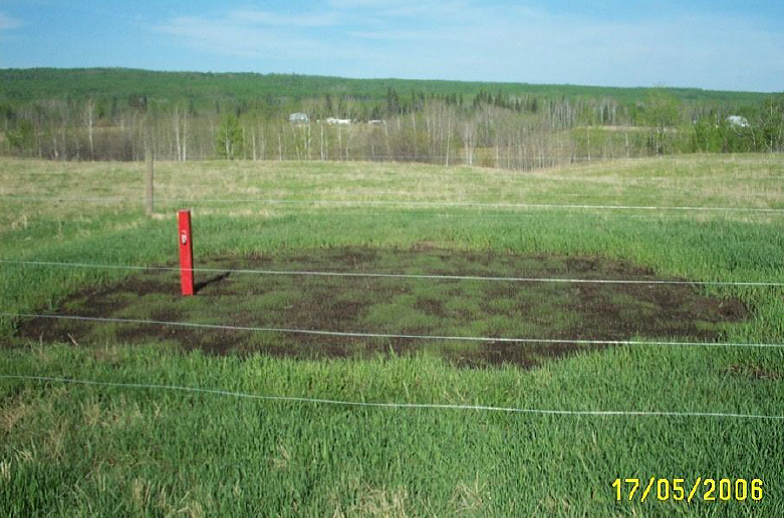Oil & Gas
Orphan Wells in Western Canada
May. 5 2020
According to the most general definition on Wikipedia, orphan wells have been defined as “well sites that have been permanently taken out of production and that do not have any party legally or financially responsible to deal with decommissioning and reclamation obligations” [1]. The quantity of such wells has been increasing for a few consecutive decades in Western Canada, raising a lot of concerns and making headlines in the news [2-5]. Those concerns appear to have been heard and addressed, as the federal government recently announced that it will be providing significant financial help [6].
Provincial governments in Western Canada have also responded through the introduction of various programs:
SASKATCHEWAN
The government of Saskatchewan instituted the Orphan Fund Procurement Program which is responsible for identifying orphaned upstream oil and gas wells and facility sites in the province. This program supports all work pertaining to abandonment, decommissioning, and reclamation of orphan wells and facility sites [7].
By March 31, 2020, the province had designated 847 wells as orphans. For 148 of those wells, the abandonment status was specified as “Required”. To another 639 of those wells, they applied a “Required” reclamation status. Saskatchewan’s Orphan Facility List included 44 objects that were mostly oil and gas batteries. A “Required” abandonment status was specified for 25 of them, and a reclamation was required for another 29 [8].
BRITISH COLUMBIA
The British Columbia Oil and Gas Commission (BCOGC) instituted the Orphan Site Reclamation Fund (OSRF) to decommission and restore orphan wells and sites [9]. According to BCOGC OSRF annual reports, [10] as well as other publications [2-4], orphan wells have dramatically increased from 45 to 346 over the span of 4 years. These wells are located exclusively in Fort St. John, Dawson Creek, and Fort Nelson in Northeastern BC. The last version of this list was published in February 2020, listing 355 wells with only 21 (or 5.9%) having a “Restored” status [11].
ALBERTA
The Orphan Well Association (OWA) is the only “independent, non-profit organization in Alberta that operates under the delegated legal authority of the Alberta Energy Regulator (AER). The mandate of the OWA is to safely decommission orphan oil and gas wells, pipelines and production facilities, and restore the land as close to its original state as possible” [12]. The current inventory list of OWA includes:
- 2983 orphan wells for abandonment
- 283 orphan facilities for decommissioning
- 3844 orphan sites for reclamation
- 935 orphan sites reclaimed [13]
Regardless of the location of orphan gas wells or oil wells, it has been frequently observed that hydrocarbons can find a way from their underground formation zones up to the soil surface. An obvious indication of the occurrence of such a phenomenon could be a significant suppression of vegetation.
When the concentration of migrated hydrocarbons reaches a sufficient level, it could combine with oxygen from the atmosphere to form a flammable mixture and potentially catch on fire.
When orphan wells are found to be leaking, it is important to find its source of hydrocarbon gas migration (i.e., how deep). Prior to abandonment, the subject gas well or oil well could have been on production from various formations, located at significantly different depths. An understanding of which formation(s) actually contribute to the hydrocarbon gas migration would fully define scenarios of follow-up actions for orphan well remediation and site restoration work.
Bureau Veritas’ Oil and Gas division in Edmonton (AB) uses technology that is capable of answering this question. The technology is based on the precise measurement of the stable carbon isotope composition of C1 – C4 hydrocarbons present in a migrated gas, which is known to be unique for a particular geologic formation and geographic location. Such a concept of “hydrocarbon fingerprinting” was proposed in the 1990s [14-15] and has been successfully demonstrated with ample experimental data, collected at many wells, including those located in Western Canada. Over the last five years, Bureau Veritas has provided the Orphan Well Association of Alberta with analysis data, interpretation of the results obtained, and source identification reports for almost 400 tested wells.
Authored by Andrey Tsyganok
References
[1] Orphan Wells (Alberta), Wikipedia
[2] 'A massive liability': B.C.’s orphan fracking wells set to double this year, The Narwhal
[3] B.C. aims to clean up hundreds of orphan well sites, JWN Energy
[4] Oil and gas cleanup costs in B.C. are $3B and rising, auditor general finds, CBC News
[5] Responsible Well Abandonment Up In Saskatchewan, Discover Weyburn
[6] Trudeau announces $1.7B to clean up orphan wells in B.C., Alberta, Saskatchewan, Global News
[7] Orphan Fund Procurement Program, Province of Saskatchewan
[8] Orphan Inventory, Province of Saskatchewan
[9] Orphan Site Management, BC Oil & Gas Commission
[10] 2017/18 and 2018/19 Orphan Site Reclamation Fund Annual Report, BC Oil & Gas Commission
[11] List of Orphan Sites, BC Oil & Gas Commission
[13] OWA Orphan Lists, Orphan Well Association
[14] D. Rowe, A. Muehlenbachs, Nature, 1999, v. 398, pp. 61-63.
[15] S.W. Taylor, B. S. Lollar, L.I. Wassenaar, Environ. Sci. Technol., 2000, v. 34, pp. 4727-4732.

